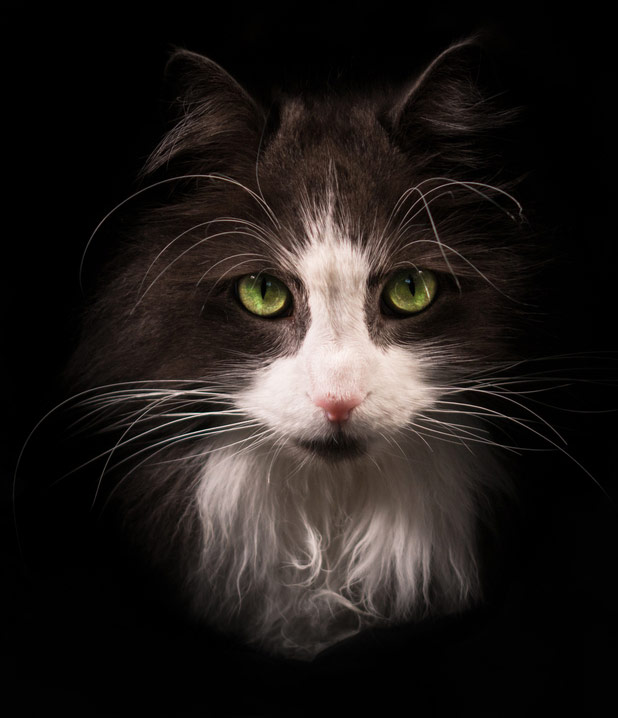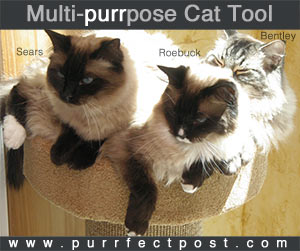Amazing Cat Facts to Know and Share

Cats are wonderful, fun, and fascinating creatures. There are things about them that many people, even those who have had cats for years, don't know.
We've compiled some interesting cat facts for you to wonder at and share with your friends.
Cats Sleep Up to 16 Hours a Day
OK, if you're a cat person, you probably do know this one. After all, it's an easy one to observe. But do you know why cats sleep so much?
Cats are predators, and they're crepuscular. That means they're most active during twilight times. Their bodies are designed to expend huge amounts of energy hunting, then enjoy a meal, then nap and gather strength for the next hunt.
You can learn more here: "Why Do Cats Sleep So Much?"
Cats Groom a Lot
Well, this is another one that's actually pretty well-known and obvious to anyone who's been around cats.
But did you know that a cat spends up to 30% of her awake time grooming herself? That's a lot of bathing!
Cats have special tongues that help them with their grooming activities, too: "Why Cats' Tongues Are Rough."
Cats Have a Special Organ That Helps Them Smell Better
It's called the Jacobson's Organ, or the vomeronasal gland, and it's a small sac at the back of the roof of your cat's mouth.
When your cat smells something, then opens her mouth a bit and tips her head back, she's depositing molecules into that organ, which then traps them and transmits facts about them to the kitty's brain. The action of using the gland is called the Flehmen Response, and you can see it in action here.
Cats Have Whiskers in Strange Places
A cat has whiskers on their cheeks, but there are also some in her eyebrows, chin, and the backs of her front legs.
Cats use their sensitive whiskers to feel air vibrations that tell them information about their environment. Whiskers help cats navigate at night and decide whether they can fit into certain spaces.
Cats can also suffer from whisker fatigue if they have food and water bowls that are deep and narrow, pushing their whiskers back routinely. Whisker fatigue can be relieved by using a water fountain and special shallow, wide bowls.
Cats Have a Low Thirst Drive
Cats are obligate carnivores, which means they must eat animal protein to survive. In the wild, that means they eat prey, and they get most of their water there, too.
Because of that design, cats don't have a high drive to drink water, and they can easily become chronically dehydrated, which eventually results in kidney disease.
Dry cat kibble doesn't contain much moisture, especially compared to a cat's natural prey, so cats must either be fed canned food or care must be taken to encourage good water consumption. A water fountain can help because cats naturally like to drink from running rather than standing water.
Cats' Skeletons Are Designed for Flexibility
Cats are hugely flexible, and the way their skeletons are designed have a lot to do with that. A cat's vertebrae are connected loosely, and they have extra-cushiony discs between them, allowing their spines to be extremely flexible.
Also, a cat's shoulder blades aren't attached to the rest of their spine by bone but rather by muscle only. That means they have extra flexibility and ability to move in all directions with the front of their body.
Cat Purrs Are Still a Mystery
A cat's purrs are a huge part of their personality, but science has yet to figure out exactly why or even how they do it.
We do know that cats' purrs can aid in healing, that cats use them for many different reasons, and that big cats that roar don't purr. You can learn more here: "Why Do Cats Purr? The How & Why of Cat Purring."
You May Also Like These Articles:
Stop Doing These Things to Your Cat Right Now
Will My Cat Love Me Less If I Feed Her Less?
Why Does My Cat Sleep on My Head?
Why Do Some Cats Carry Food Out Of Their Bowls to Eat It?
Cats Have Personality Traits Similar to Humans
Are You Shortening Your Cat's Life? - Slideshow
Notice: Ask-a-Vet is an affiliated service for those who wish to speak with a veterinary professional about their pet's specific condition. Initially, a bot will ask questions to determine the general nature of your concern. Then, you will be transferred to a human. There is a charge for the service if you choose to connect to a veterinarian. Ask-a-Vet is not manned by the staff or owners of CatHealth.com, and the advice given should not delay or replace a visit to your veterinarian.





